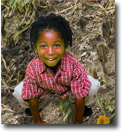Learn about general healthy habits, cleaning tips, and proper nutrition to keep your child safe from lead poisoning.
Besides finding and removing lead from your home, simple measures can help protect you and your family from lead poisoning.
Contents
.
Healthy Habits to Keep Your Child Safe
Wash your child’s hands often and their toys and pacifiers after use.
Wash work clothes separately, if a family member works with lead.
Wash surfaces with a damp cloth when dusting.
Wash floors with a wet mop, and wash windowsills twice weekly, with all-purpose detergent.

Prevent children from putting their hands and toys in their mouth.
Prevent children from playing in dirt.
Prevent children from being near remodeling projects.
Prevent children from eating imported candies and snacks.
Make sure to use cold water for cooking, drinking and baby formula.
Make cold water run for 1 minute before using.
Make sure to leave shoes at the door before entering the home.
Make children’s food high in iron and calcium.
Make sure to check the recall website regularly and remove any recalled toys and jewelry where children can reach.
.
Cleaning Tips For Lead Dust
Lead dust can come from chipping and peeling paint. It can also enter your home from the outside. You can control how much lead dust is created or enters your home by using the wet cleaning method, having people remove their shoes before coming indoors, and picking up paint chips you find on the floor, inside windows, or in other places where your children play.
To clean properly, use soap and water to wash anything that may have come in contact with lead. Click here to download an infographic of tips to clean lead chips and dust in your home!
The following tips on wet cleaning can help reduce the spread of lead dust. Make sure to clean ONE room at a time. When finished with one room, empty all buckets. Repeat these steps until done:
.
1. Proceed safely
⋅ Wear rubber gloves while cleaning
⋅ A pregnant woman must NOT be the one to clean up lead dust
⋅ Keep children away while cleaning
.
2. Use Wet Cleaning
This method reduces the spread of lead dust. For shelves, start at the highest point and work your way down. For floors, start at the farthest corner and work your way to the door. You will need a rag or mop and three separate buckets: one with warm soapy water, one with plain water, and one empty bucket.
1. Using SOAPY water, wipe surface with a rag or mop.
2. RINSE with plain water.
3. Squeeze water out of the rag or mop into an EMPTY bucket
4. Repeat until room is clean
5. Wet clean everything regularly
3. Vacuum with HEPA
Use a HEPA (high efficiency particle air) filter vacuum cleaner NOT a regular household vacuum. Vacuum from top to bottom then left to right.
Rugs can be steam cleaned or washed in a washing machine.
DO NOT WASH WITH OTHER CLOTHES OR LINENS.
.
Prevention Through Nutrition
A healthy diet can protect children from lead poisoning by decreasing lead absorption:
-
- Offer 4-6 snacks or meals every day. A child with a full stomach is less likely to absorb lead.
- A child who eats enough iron, calcium, vitamin C and protein will absorb less lead.
- Keep fat intake low. Offer healthy snacks like fruit, vegetable sticks (maybe with peanut butter), iron fortified cereal or bread, cheese or pudding instead of candy or chips.
Be sure to wash your hands and your child’s hands before preparing, handling, or eating food.
.
Foods high in iron and protein
-
- Lean red meat, chicken, liver, or fish
- Dried beans, peas or lentils
- Leafy green vegetables, such as broccoli and spinach
- Fortified cereals and breads

- Peanuts, sunflower seeds
- Dried fruits, such as raisins, prunes and apricot
- Eggs
Foods high in vitamin C
-
- Citrus fruits and juices
- Bell peppers, collards, tomatoes, raw cabbage, cauliflower, broccoli and greens
- Potatoes with skins and sweet potatoes
- Strawberries, watermelon, cantaloupe
Foods high in calcium
-
- Leafy green vegetables, such as kale, collard greens, turnip greens

- Milk, cheese, yogurt, ice milk, pudding
- Tofu
- Peanuts and peanut butter
- Salmon and sardines
- Calcium enriched soy milk
- Dried fruits and raisins
- Leafy green vegetables, such as kale, collard greens, turnip greens
Avoid high fat foods: (Bake or broil your food)
-
- Fried foods, such as French fries or potato chips
- Sausage, bacon, lunch meats like bologna
- Margarine, butter, shortening, lard or cooking oil
- Cakes, pies, pancakes

